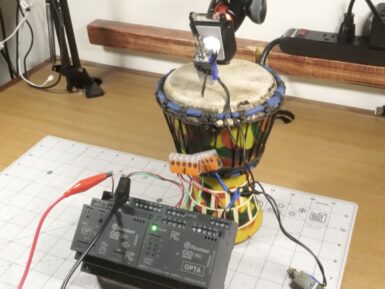
CAN-BUS Shield v2
Sold outWith its long travel distance, great communication speed and high reliability, CAN-BUS is one of the most common industrial bus.
Overview
It is commonly found on modern machine tools and as an automotive diagnostic bus.
Thanks to the CAN-BUS, makers are able to hack their cars!
It adopts MCP2515 CAN-BUS controller with SPI interface and MCP2551 CAN transceiver to give you Arduino CAN-BUS capability. Default pinout is OBD-II and CAN standard pinout can be selected by switching jumpers on DB9 interface.
Moreover, it has the TF card slot for data storage and the CS pin that can be set to D4 or D5.
The INT pin can also be set to D2 or D3 by switching jumpers on the back of the shield.
CAN-BUS Shield Works perfectly with Arduino UNO (ATmega328), Arduino Mega (ATmega1280/2560) as well as Arduino Leonardo (ATmega32U4).
Features:
-
Implements CAN V2.0B at up to 1 Mb/s
-
Industrial standard 9 pin sub-D connector
-
OBD-II and CAN standard pinout selectable.
-
Changeable chip select pin
-
Changeable CS pin for TF card slot
-
Changeable INT pin
-
Screw terminal that easily to connect CAN_H and CAN_L
-
Arduino Uno pin headers
-
2 Grove connectors (I2C and UART
-
SPI Interface up to 10 MHz
-
Standard (11 bit) and extended (29 bit) data and remote frames
-
Two receive buffers with prioritized message storage
Conformities
Get Inspired

Makers have long asked the question “why bother with an expensive PLC when I can just use an Arduino?” The answer comes down to the priorities and needs of industrial clients. In a factory automation setting, the client will prioritize durability, reliability, and serviceability over the one-time purchase price of the device itself. But to prove that Arduino’s professional turnkey solutions are just as easy to use as their developer-focused educational counterparts, Jeremy Cook leveraged an Arduino Opta micro PLC to build a drum machine. This isn’t any old drum machine that plays sound samples or synthesized notes, but rather a robotic drum machine that makes noise by banging on stuff like a true percussion instrument. Cook could have built this with any Arduino board and a few relays, but instead chose to implement the Opta and new Opta Digital Expansion. That is robust enough for serious commercial and industrial applications, but is still simple to program with the familiar Arduino IDE. Programmers can also use conventional PLC languages if they prefer. In this case, Cook made noise with relays and solenoids. The Opta has four built-in relays and Cook’s sketch flips one of them to make a sound analogous to a hi-hat. Cook added an Arduino Pro Opta Ext D1608S module with its solid-state relays for the other two “drums.” One of those fires a solenoid that taps a small hand drum (the kick drum sound), while the other controls a solenoid that hits a power supply enclosure (the snare sound). Together, those three sounds can cover the basics of a drum track. Cook’s sketch is a drum sequencer program that stores each sound sequence as array, looping through them until turned off. An Opta may be overkill for a project like this one, but this does a great job of demonstrating the ease at which an Arduino user can transition to professional PLC work.







